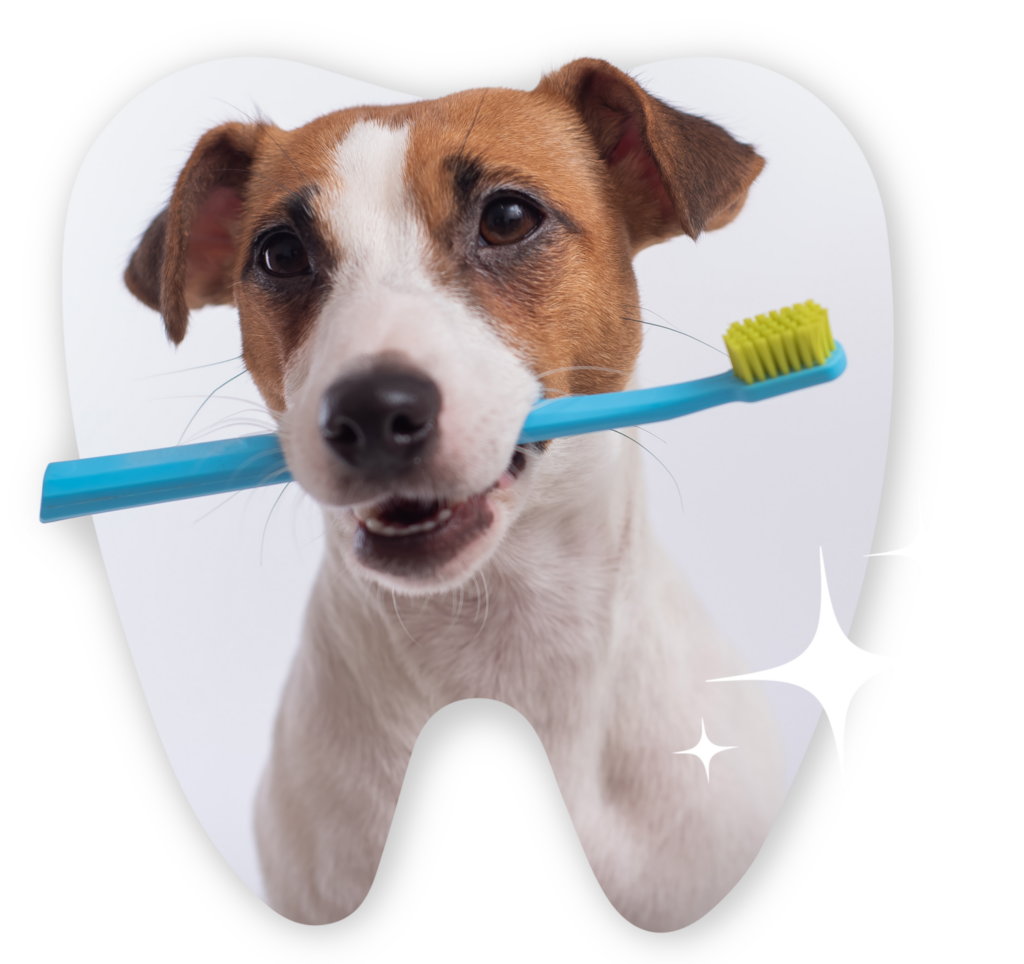Dental Days Deal
$100 off Dental Cleanings
For new and existing clients!
Call (303) 442-6262 to schedule a cleaning today!

January 15 – March 15 2025
*New and existing clients. Canine and feline only. Not valid with other offers. Not redeemable for cash.May use offer on multiple pets within the same household. Not applicable for membership or wellness plans.
At Boulder Veterinary Hospital, we prioritize your pet’s dental health by providing full pet dental care. We recommend having your pet’s teeth checked at their regular annual wellness visit, and scheduling routine pet teeth cleanings to stave off tartar buildup. Consistent home dental care and routine professional cleanings can help prevent not only bad breath, but also more serious health issues related to oral infections and disease.
Signs and Symptoms of Dental Disease
According to the American Veterinary Dental Society, 80% of dogs and 70% of cats show signs of oral disease by three years of age. So how can you tell if your pet is suffering from dental disease? The following signs and symptoms are not always easy to detect, but we recommend looking for:
Bad breath
Broken, loose, or missing teeth
Discoloration or tartar build up
Excessive chewing or drooling
Reduced appetite or inability to chew
Swelling or bleeding around the mouth

Dog/Cat Teeth Cleaning FAQs
During your pet’s regular annual exam, your veterinarian will perform an oral exam and inform you if they recommend a dental procedure. When your dog or cat arrives for their teeth cleaning, another full physical exam and laboratory work (i.e., bloodwork) will be performed. The technician will place an intravenous (IV) catheter in order to administer fluids during and after the procedure, which will support your pet’s blood pressure. The IV catheter will also provide safe access to administer anesthetic medications. Your pet will then be placed under general anesthesia. The veterinarian will then perform a complete oral exam, which includes full-mouth radiographs (required for all dentals), and search for signs of bone loss, loose and broken teeth, tumors, and other issues. Injectable antibiotics may be administered if there is significant gingivitis present. Each tooth will be thoroughly cleaned, and root planing will be performed, removing bacteria and plaque from underneath the gum line. The teeth will be polished, and the procedure is completed with a sealant to protect the enamel.
We require dental radiographs (X-rays) for every dental procedure. Because 50% of each tooth is below the gum line, this makes it difficult for veterinarians to fully assess and treat your pet’s teeth without knowing what’s going on below the surface. Full mouth X-rays allow the veterinarian to visualize the part of the tooth under the gum line and uncover any hidden painful disease, such as root abscesses, root fractures, severe bone loss of the jaw, and cystic lesions. If these issues go undiagnosed, that means they also go untreated, potentially causing your pet pain.
STEP 1: SUPRAGINGIVAL CLEANING
Tartar and plaque that are visible above the gumline are removed so that the full surface of each tooth may be visualized and evaluated.
STEP 2: SUBGINGIVAL CLEANING
The presence of plaque and calculus under the gumline is what causes periodontal disease. Periodontal disease is the most common ailment diagnosed in all animal patients. Cleaning both above and underneath the gumline is important to not only keep the teeth clean, but also healthy.
STEP 3: ASSESSMENT
The veterinarian assesses the entire oral cavity, measuring pockets around the teeth and evaluating the lips and tongue. This assessment is difficult and almost impossible to make when a pet is awake. Any abnormalities, such as tongue or lip lesions, deep pockets in the gums, and loose, broken, or discolored teeth, are recorded on the dental record.
STEP 4: RADIOGRAPHS
Radiographs are taken of every tooth in the mouth. The veterinarian will review the X-rays to diagnose retained roots, enamel defects, root abscesses, and bone loss from infection.
STEP 5: POLISHING
The mechanical removal of plaque and calculus from the previous cleaning steps causes microscopic roughening of the tooth surfaces. Polishing the teeth smooths the surface, making it more difficult for plaque and calculus to adhere to the teeth.
STEP 6: TREATMENTS
Various treatments may be recommended by your veterinarian depending on what is diagnosed during the dental procedure. Treatment options will be explained by the veterinarians and may include tooth extraction, bonded sealants of fractures, and local antibiotic treatment.
If extractions are needed, we appropriately manage pain before, during, and after the procedure with injectable medications or oral medications to go home. The teeth will be polished, and the procedure is completed with a sealant to protect the enamel.
STEP 7: PREVENTION
Your pet’s dental health does not begin and end in the clinic. In addition to your dog’s or cat’s teeth cleaning and exams, consistent pet dental care should be performed at home. Ask your veterinarian or technician for recommendations on how to properly care for your pet’s oral hygiene at home.


